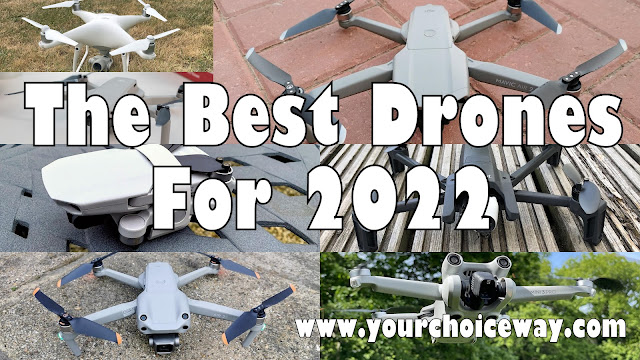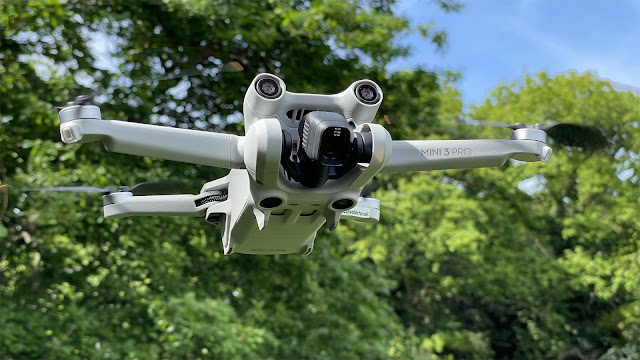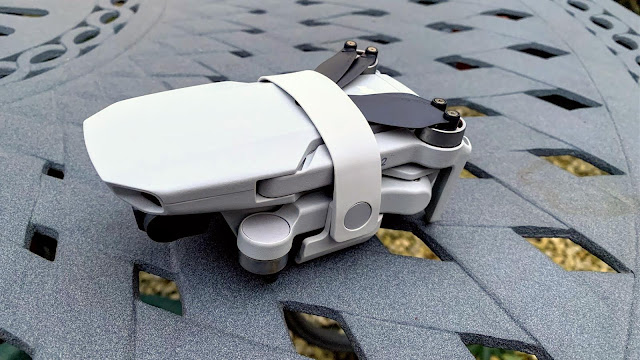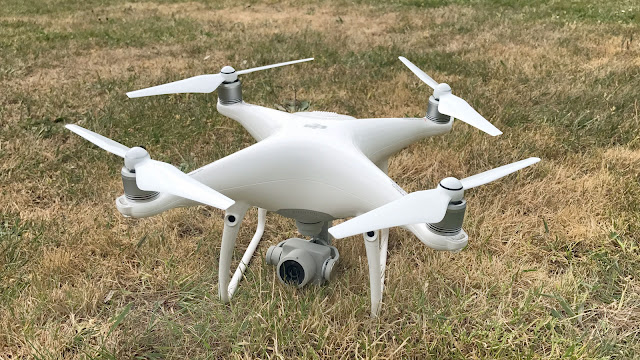For around the price of a high-end smartphone you can buy what is effectively a flying smartphone camera.
These drones, which aren’t professional devices but are aimed at enthusiastic consumers, have built-in cameras that are roughly on a par with phones for photo and video quality.
But, of course, with a drone you can capture images and footage from a perspective you’d never get from a smartphone. And their gimbals ensure video is smooth and stable.
These drones are very easy to fly, and many have sensors to help avoid crashing into things. Plus, some can even fly on autopilot while tracking a person (or an object) and avoid obstacles at the same time.
The features you’ll get – and the quality of the camera – will depend largely upon your budget. Here, we’ve hand-picked drones which aren’t toys: they’re serious gadgets and cost at least several hundred pounds or dollars. As you’d guess, you tend to get what you pay for, so the higher the price, the better quality and more features a drone will have.
Scroll down below the reviews to find more in-depth buying advice.
1. DJI Mini 3 Pro
- Has obstacle sensors
- Great low-light video quality
- Can track subjects
Cons
- Relatively expensive
- No side-facing sensors
DJI’s latest drone weighs less than 250g, so you don’t have to register it in some countries. But compared to previous models in the Mini range, the Pro can detect and avoid obstacles.
It can also track subjects, which was one of the big drawbacks of the Mini 2, for example.
DJI has also bumped up the camera quality noticeably, and the Mini 3 Pro delivers surprisingly good footage in low light – a traditional weakness of tiny drones with small camera sensors.
It will also shoot 4K60 video, or up to 4K30 in HDR, and you can record in D-Cinelike, which allows you to do your colour correction later when editing the video. If you need to record in portrait, the camera can be rotated 90° as well.
Even when bought without a controller, the Mini 3 Pro is much more expensive than the Mini 2 (and 2S), but if you want the extra features it offers, and want the best quality from a sub-250g drone, this is the one to buy.
Read our full DJI MIni 3 Pro review
2. DJI Air 2S
- 1-inch sensor
- HDR & Log profiles for video
Cons
- App limited to 1080p output
- More expensive than Air 2
The Air 2S is the best drone to buy if you’re not worried about registration. It’s not worth upgrading to if you already own a Mavic Air 2 but if you don’t, then there are some good reasons to buy the Air 2S instead of the cheaper Air 2, such as the camera’s bigger 1-inch sensor and extra sensors for avoiding obstacles.
Some features are decidedly not for consumers, though. Only pros will be able to get the most out of the Air 2S’s 10-bit capabilities and if you are only going to shoot in standard 8-bit video, you’re may not notice a huge difference in quality at 4K resolution between the Air 2S and Mavic Air 2.
It delivers better quality (then the Air 2) in low light, but this isn’t when most people fly. Put simply: if you care about eking out those last drops in video quality and know what you’re doing, the Air 2S is the obvious choice. If you don’t have the first idea about how to work with Log video and would rather stick to QuickShots and the editor in DJI’s Fly app, you’re probably better off saving your money and going with the Mavic Air 2.
Read our full DJI Air 2S review
3. DJI Mini 2
Pros
- Great video quality
- No registration required in some countries
Cons
- No obstacle avoidance
- No ActiveTrack
The Mini 2 is a fantastic drone and still deserves its place in this list. Video quality is markedly improved over the original Mavic Mini, and the ability to shoot RAW photos (as well as the auto exposure bracketing feature) means it’s a great tool for aerial photography as well.
Add the upgraded motors which allow for better wind resistance, the significantly better controller and massively better range (and performance when there’s lots of interference) it easily justifies the price hike.
Even without Active Track (which is the biggest disappointment – not the lack of obstacle avoidance) it’s a great buy for those on a budget.
Read our full DJI Mini 2 review
4. DJI Mavic Air 2
- Shoots 4K video at 60fps
- Good obstacle avoidance
Cons
- No LOG video profile
- App limited to 1080p output
The Mavic Air 2 is still one of the best options under £800/$800. And it’s still one of the best consumer drones around. It’s still widely available, but may not be for much longer as it has been replaced by the 2S.
Shooting 4K60 is great as it means you can slow the footage in your video editor for a more cinematic look, and you can also shoot slo-motion footage at 240fps in 1080p.
Add the upgraded obstacle avoidance, remote control and flight time when compared to the original Mavic Air and there’s no contest: the Air 2 is superior in every way. It isn’t perfect due to the lack of obstacle sensors on the sides, but accept and work around its limitations and you’ll be extremely happy with it.
The Air 2S is better, but it’s more expensive and only those that understand 10-bit video will really benefit from the upgraded camera.
Read our full DJI Mavic Air 2 review
5. DJI Mini SE
- Affordable
- Under 250g
Cons
- Basic video quality
- No obstacle avoidance
DJI quietly released the Mini SE last year, and it’s the company’s cheapest drone yet.
It’s sort of a cross between the original Mini and the Mini 2.
It’s easiest to consider it a Mini 2 with cut-down specs that match the original Mini for things like maximum video resolution (2.7K), transmission distance (2km) and flight time (30 minutes).
As it costs just £269 / $299, it is a real bargain if you don’t need to shoot 4K videos or RAW photos.
Aimed at first-time fliers, it’s a competent drone which is easy to fly, but it doesn’t have obstacle avoidance like some of DJI’s more expensive drones.
The good news is that it takes respectable video and photos, and it’s light enough to be flown without registering in many countries (not the UK, sadly).
6. Parrot Anafi
- Camera can tilt upwards
- Shoots 4K HDR video
Cons
- No obstacle avoidance
- Some features behind paywall
With a gimbal that can tilt up 90 degrees as well as down, plus a battery that charges via USB-C and the ability to record 4K HDR video, the Anafi is a good alternative to some of DJI’s drone, especially if you can find it on sale at a discounted price.
The snag is that it has no obstacle avoidance and some of the autopilot modes are locked behind in-app purchases which grates when you’ve just spent this much on a capable drone.
Read our full Parrot Anafi review
7. DJI Phantom 4 Pro v2.0
- Camera has mechanical shutter
- Shoots 4K60 video
Cons
- Big, but doesn't fold
- Not as portable as other drones
Re-introduced after a shortage of components, the Phantom 4 Pro v2.0 is still one of DJI’s most capable drones. The main disadvantage is that is doesn’t fold, so unlike a Mavic, it’s not nearly as portable.
The v2.0 was originally launched in 2018, but still holds up in terms of specs. It records 4K video at up to 60fps, but the main attraction is the mechanical shutter. Admittedly, this is only really a benefit if you want to use a drone for mapping (photogrammetry), but none of DJI’s other consumer drones have a mechanical shutter.
It has OcuSync 2.0 HD for image transmission to the remote controller, plus obstacle detection in five directions and avoidance in four.
If you’re looking for the specific features on offer here and don’t need portability instead, the Phantom is still a good choice.










0 comments:
Post a Comment